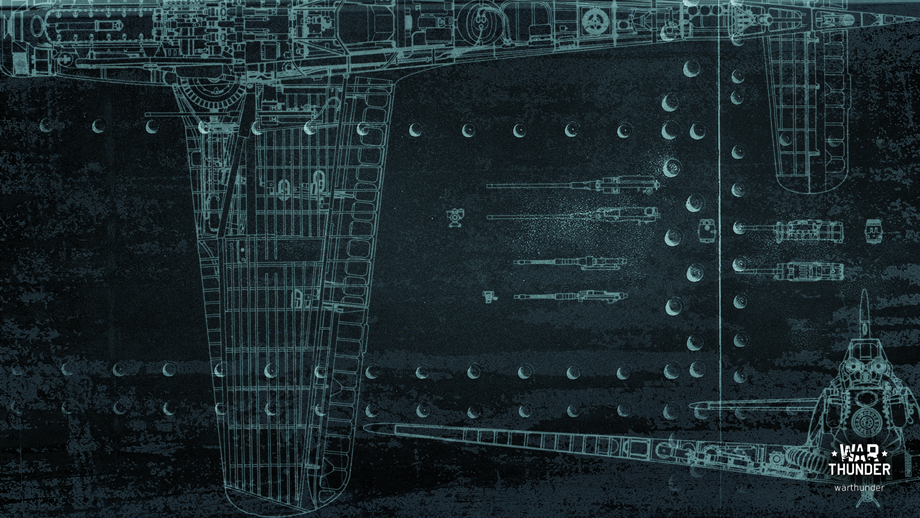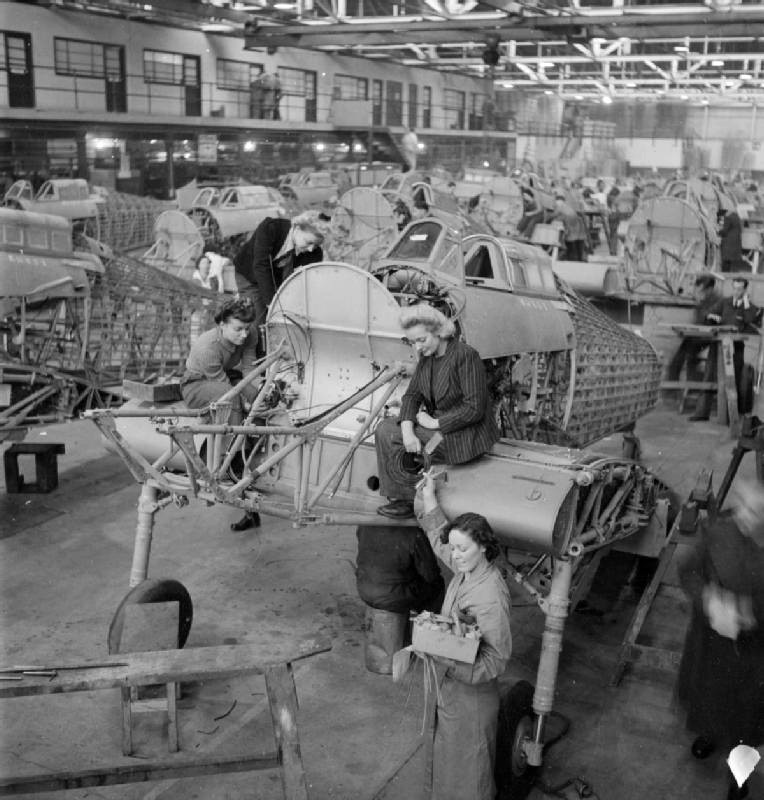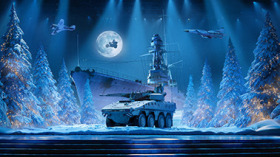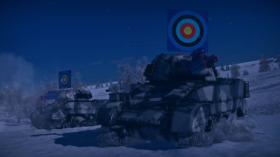
- For PC
- For MAC
- For Linux
- OS: Windows 10 (64 bit)
- Processor: Dual-Core 2.2 GHz
- Memory: 4GB
- Video Card: DirectX 11 level video card: AMD Radeon 77XX / NVIDIA GeForce GTX 660. The minimum supported resolution for the game is 720p.
- Network: Broadband Internet connection
- Hard Drive: 23.1 GB (Minimal client)
- OS: Windows 10/11 (64 bit)
- Processor: Intel Core i5 or Ryzen 5 3600 and better
- Memory: 16 GB and more
- Video Card: DirectX 11 level video card or higher and drivers: Nvidia GeForce 1060 and higher, Radeon RX 570 and higher
- Network: Broadband Internet connection
- Hard Drive: 75.9 GB (Full client)
- OS: Mac OS Big Sur 11.0 or newer
- Processor: Core i5, minimum 2.2GHz (Intel Xeon is not supported)
- Memory: 6 GB
- Video Card: Intel Iris Pro 5200 (Mac), or analog from AMD/Nvidia for Mac. Minimum supported resolution for the game is 720p with Metal support.
- Network: Broadband Internet connection
- Hard Drive: 22.1 GB (Minimal client)
- OS: Mac OS Big Sur 11.0 or newer
- Processor: Core i7 (Intel Xeon is not supported)
- Memory: 8 GB
- Video Card: Radeon Vega II or higher with Metal support.
- Network: Broadband Internet connection
- Hard Drive: 62.2 GB (Full client)
- OS: Most modern 64bit Linux distributions
- Processor: Dual-Core 2.4 GHz
- Memory: 4 GB
- Video Card: NVIDIA 660 with latest proprietary drivers (not older than 6 months) / similar AMD with latest proprietary drivers (not older than 6 months; the minimum supported resolution for the game is 720p) with Vulkan support.
- Network: Broadband Internet connection
- Hard Drive: 22.1 GB (Minimal client)
- OS: Ubuntu 20.04 64bit
- Processor: Intel Core i7
- Memory: 16 GB
- Video Card: NVIDIA 1060 with latest proprietary drivers (not older than 6 months) / similar AMD (Radeon RX 570) with latest proprietary drivers (not older than 6 months) with Vulkan support.
- Network: Broadband Internet connection
- Hard Drive: 62.2 GB (Full client)
Aircraft structures is a vast but telling subject, for it reveals the mind of the designer/engineer as they strive for the ultimate aircraft, and also a snapshot of the economic situation of the country of origin.
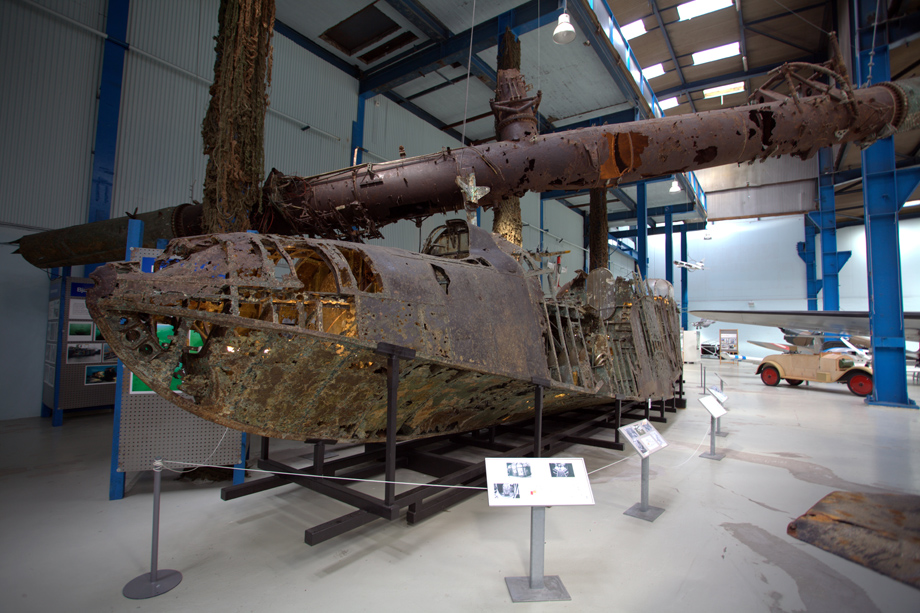 |
|
Salvaged from the water a Blohm & Voss BV 138 in Elsinore, Denmark; |
Wood is an excellent material to build airframes with; its strength-to-weight ratio is equivalent to steel yet it can be shaped and formed with inexpensive hand tools. It is also cheap and usually plentiful, however its downside is inconsistent strength and susceptibility to wood rot if soaked. Although used for centuries for flight experiments, it was the Wright brothers who successfully researched the force of lift and built the lightest possible structure to achieve it. For the next 30 years wood structures were the norm with new techniques like laminates and webbing adding strength without weight. Furniture makers were often employed to build aircraft, with seamstresses used to sew fabric covering to the skeleton frame resulting in relatively inexpensive aircraft labor-wise, especially during World War 1. The Po-2 and I-15 used wood for critical structure, with the MiG company being particularly interested in it. The use of wood did persist for large propellers like on the Fw 190 series, but the move to metals was already well under way in the interwar years, although wood was not entirely eliminated as we shall see.
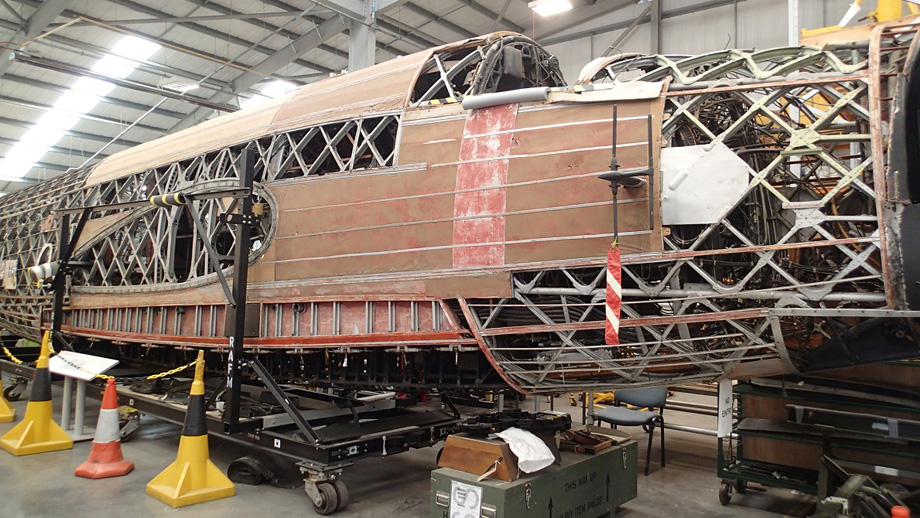 |
|
Wellington at RAF Museum Cosford undergoing complete restoration showing |
The 1920’s saw steel start to replace primary load structures. Chromoly steel (chromium-molybdenum alloy (type 41xx)) tubing welded or bolted into “space frames” was significantly stronger than wood (and more durable than aluminum) but not much heavier and eventually cheaper to produce too. It was such an effective design element that it is common on many aircraft seen in-game (and in use today); examples are Ki-10s, Yaks, Hurricanes, MiGs, He 51s and others. The shortcoming of space frames was need for streamlining, requiring wood or aluminum frames covered in fabric, adding weight. A few aircraft employed different alloys of steel for wing spars, again with the Hurricane and also the B-17 wing spar that passes though the bomb bay. The IL-2 and Hs 129 employed steel in a dual role of both structure and armor, an idea that was first envisioned and applied by Dr. Hugo Junkers in WW1 in the “J.1”. Blohm und Voss seaplanes also employed steel as a huge tube wing spar that also doubled as armored fuel tanks.
Aluminum is the material of flight, as it poses excellent strength/weight and can be readily shaped into virtually any form for ideal streamlined shape and more durable than wood. It could also be easily mass produced with stamped forms into ribs and formers which could be covered in fabric as in the Fiat CR.42 and, most notably, the Wellington series, which was made of hundreds of stamped aluminum parts assembled in a geodetic pattern and covered in fabric.
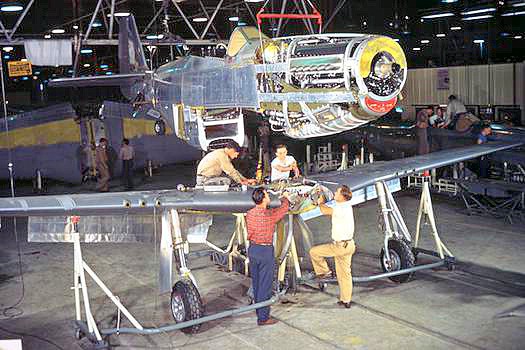 |
|
P-51D on the Inglewood assembly line, |
Of course the “stressed skin” type of “fully” or “semi-monocoque” skin is what we think of most when we look at WW2 combat aircraft - sheets of curved aluminum riveted to ribs and formers. While aluminum alloy sheet is the most visible, it is the internal cast and extruded parts that are most critical to managing the stress of flight. Close to melting, the hot metal is squeezed out of a profile like spaghetti or rotelle. Those long straight “T”, “I” and “L” shaped beams were combined to become wing spars. The Do 17s wing has two 18 meter (59 foot) long truss-type spars for a very light but strong wing, compared to more common separating joints with heavy structure and fasteners, such as in Ju 88s. The P-40, P-51, and Fw 190 fighters also had one piece wings while in the Spitfire and Bf-109, the wings attached to fuselage. Additionally, the vast majority of elevators, rudders, and some ailerons were aluminum structure covered in fabric (don’t let the silver paint fool you!).
Urgency and scarce resources pushed wood to the forefront again mid-war. New adhesives allowed better and more consistent wood structures in the form of plywood, and urgency pressed thousands of furniture makers into producing aircraft quickly. While the Russians already made extensive use of wood as previously mentioned, the resource strapped British and Germans also developed remarkable structures. The Mosquito was an ingenious design of two layers of wood veneers shaped into inner and outer fuselage halves, the space between the layers filled with balsa wood! It was in effect built like a giant model airplane with a structure quite similar to modern home-built composite aircraft. Material shortages forced Germany to use wood in the fastest aircraft on earth at the time. The Ho 229 and Me 163 used wood in their wings, the latter regarded as the fastest aircraft of WW2, while the He 162 was almost entirely wooden!
Building the best is not always the best choice. While an excellent fighter, the Spitfire took too long to build, let alone being very expensive and needing highly skilled workers. With war imminent, RAF command decided numbers were more important than performance. Although the Hurricane was effectively obsolete, the construction techniques were well-known with plentiful tooling and a good supply of trained workers available. A steel space frame fuselage with rolled steel wing spars made it exceptionally strong; judicious and simple aluminum skin from the cowling to just behind the cockpit improved aerodynamics with a wooden stringer frame behind, all covered in strong fabric, making the Hurricane far easier and faster to build at a fraction of the cost of the Spitfire, and produced in quantity just in time for the epic Battle of Britain.
Author: Joe “Pony51” Kudrna
If you would like to read more interesting facts like this, be sure to check our War Thunder Wiki!
